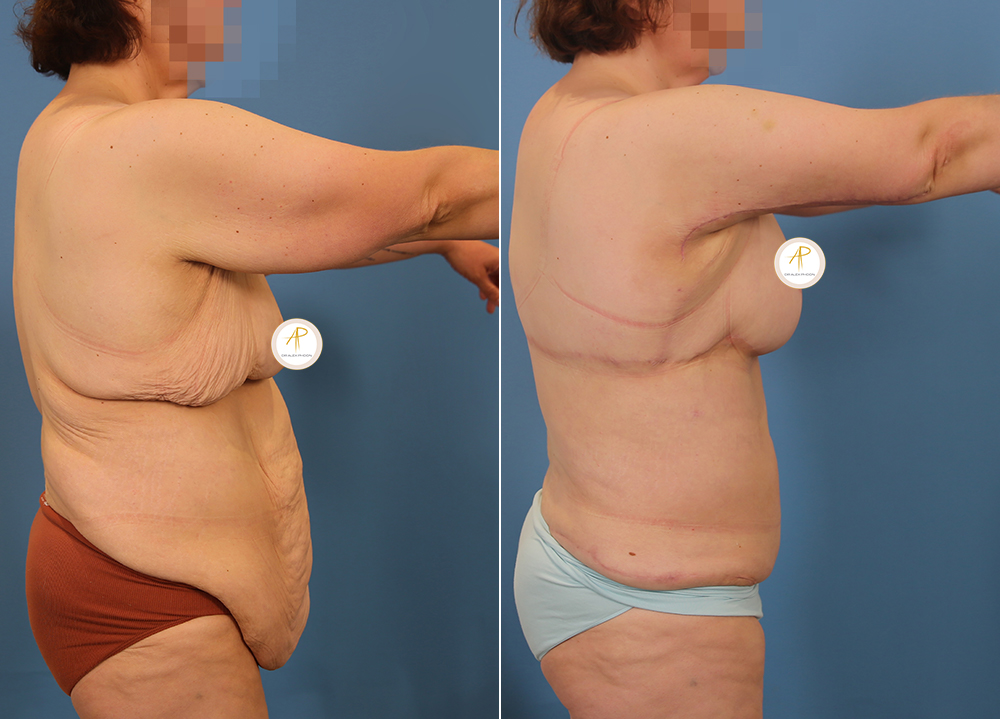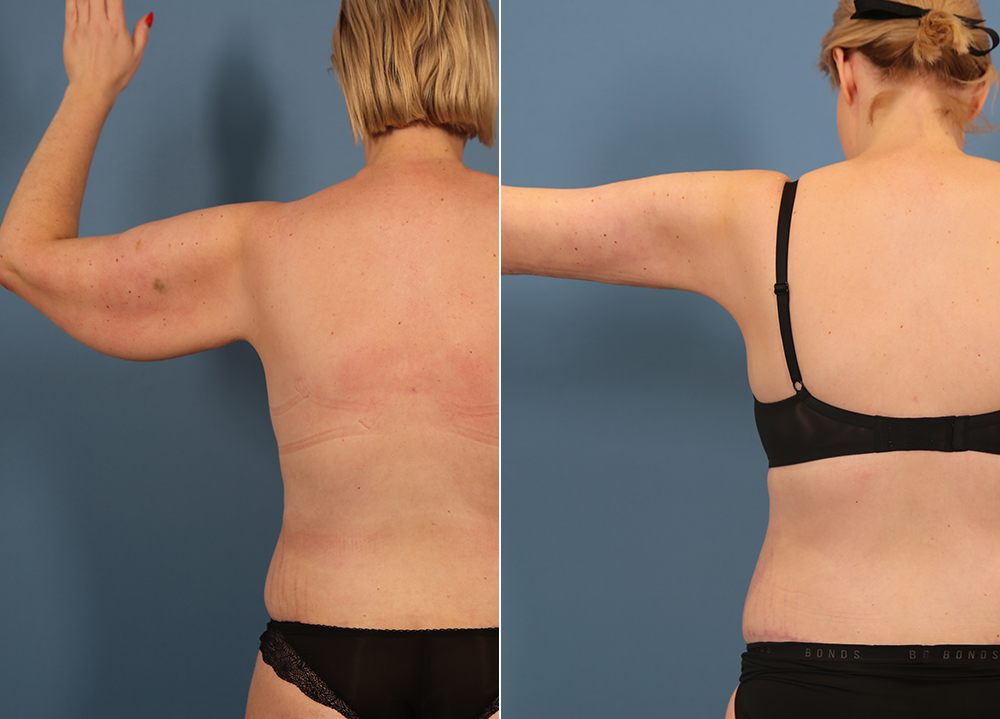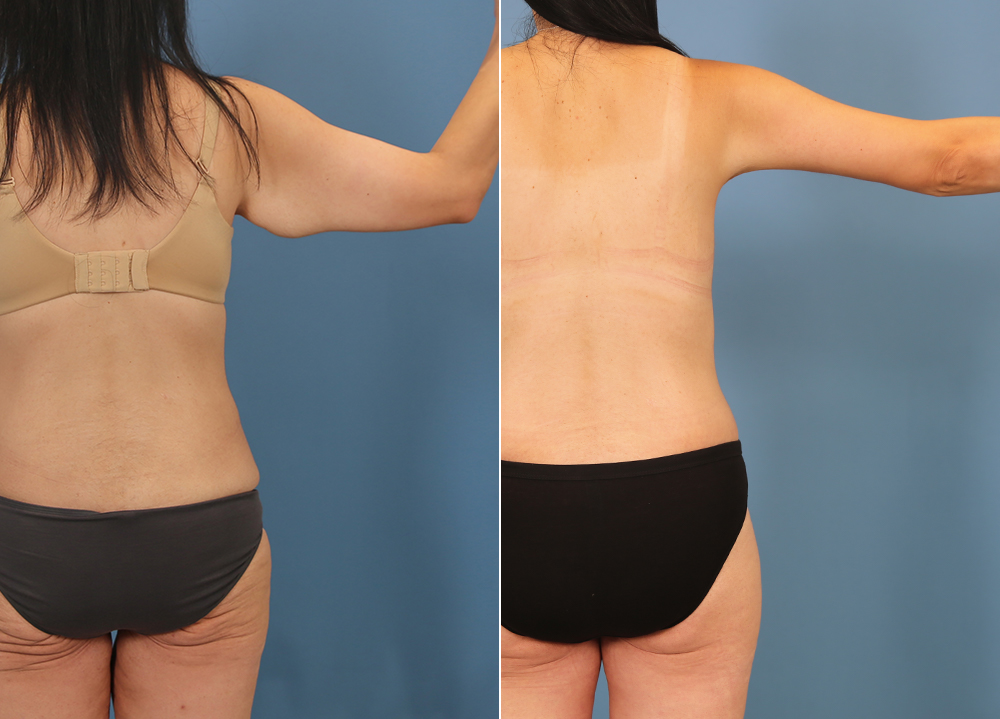
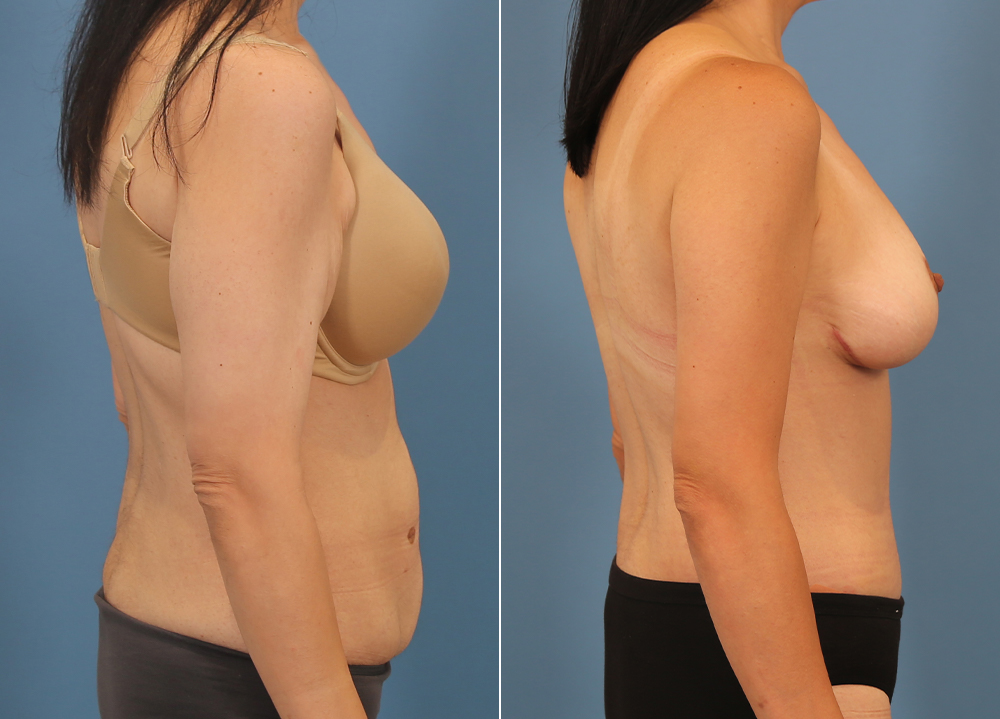
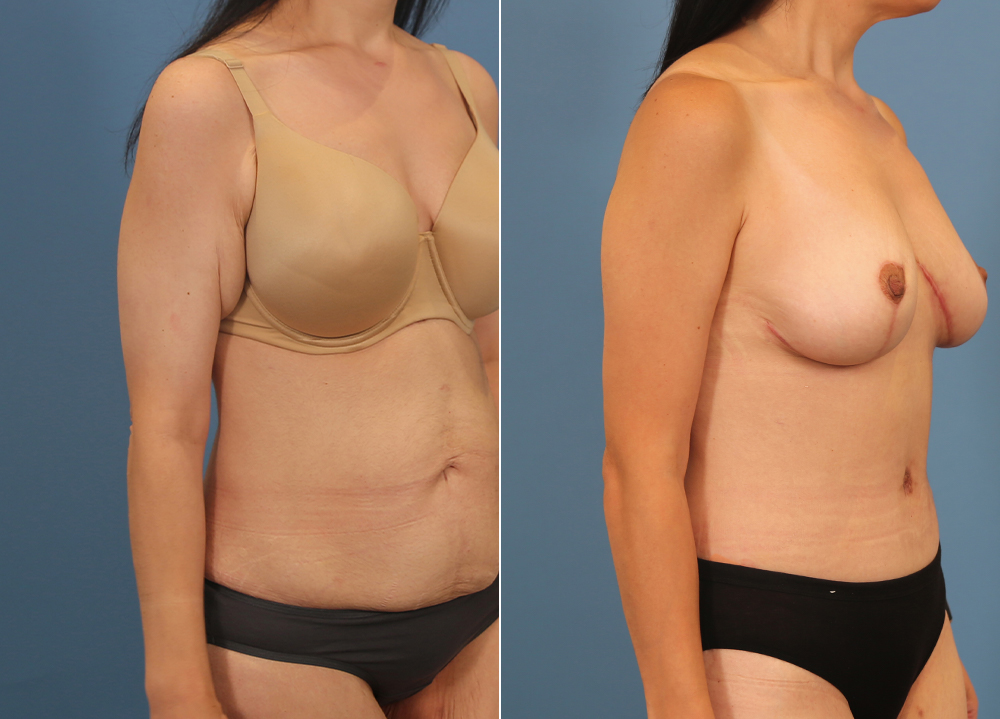
WHAT IS A BRACHIOPLASTY?
A brachioplasty, also known as an arm lift, is a surgical procedure that removes excess skin from the upper arms. Excess skin in this area may develop after weight loss, with ageing, or in some cases due to hereditary factors.
Brachioplasty differs from upper arm liposuction, although liposuction may sometimes be performed in combination with the procedure. The main component of brachioplasty is the removal of excess skin along the lower or inner border of the upper arm, which results in a scar in this area.
In addition to reshaping the arm, brachioplasty may also provide relief for people who experience physical discomfort from excess skin. Outcomes vary between individuals and should be discussed with the surgeon during consultation.
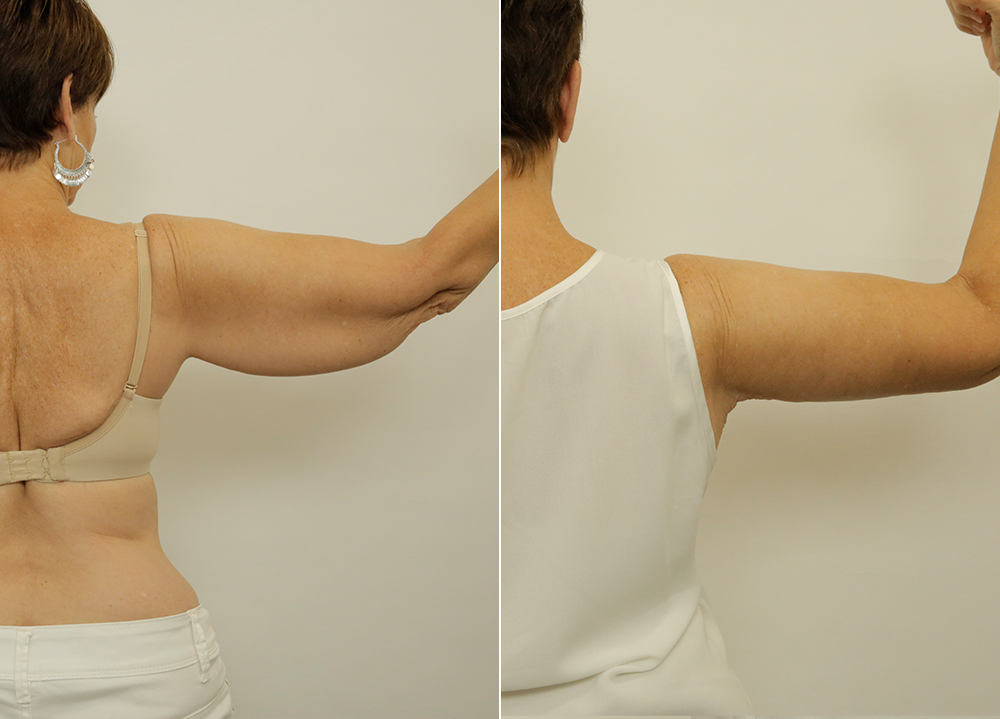
Who might consider a brachioplasty (arm lift)?
A brachioplasty may be considered by people who are at or near a stable weight and who have loose skin of the upper arms. It is not a weight-loss procedure but instead focuses on the removal and reshaping of excess skin. Liposuction may sometimes be performed at the same time to address excess fat in the area, depending on individual circumstances.
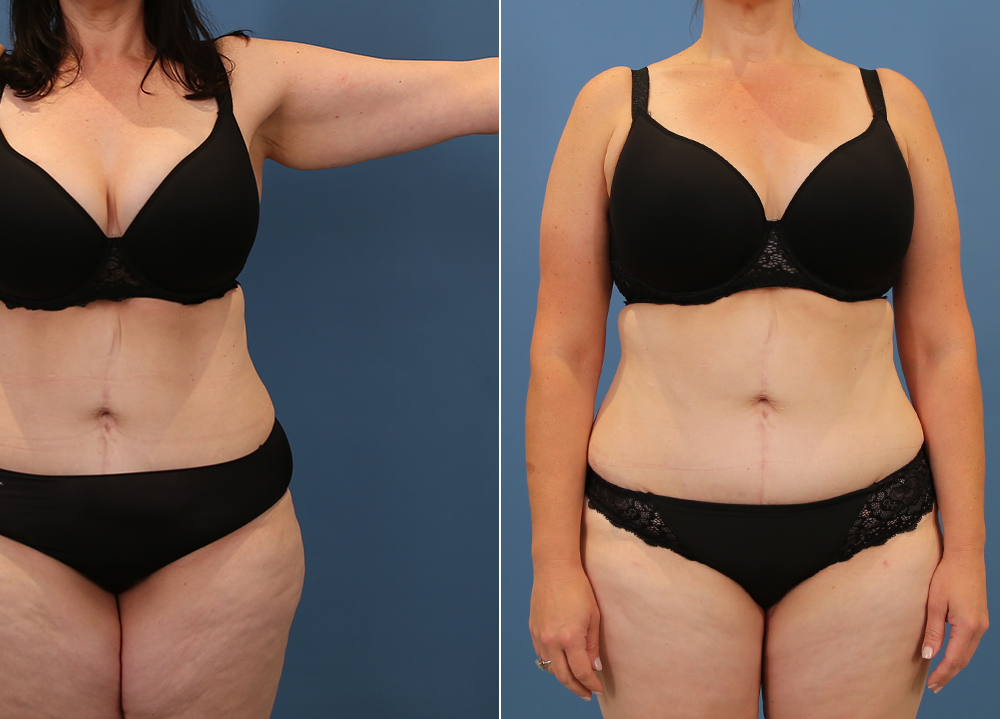
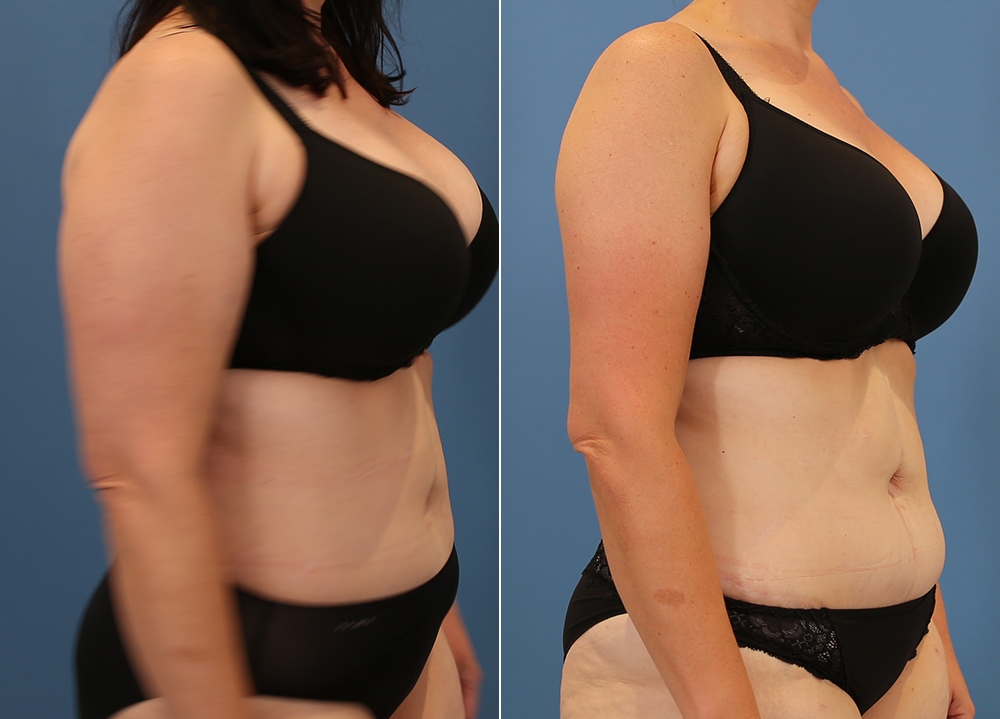
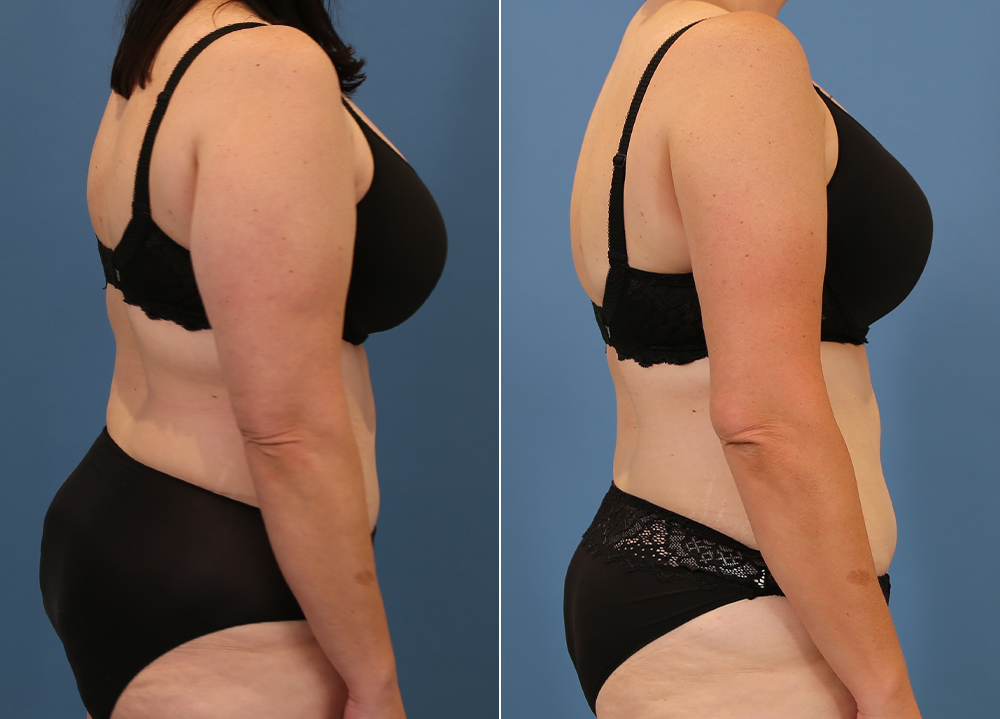
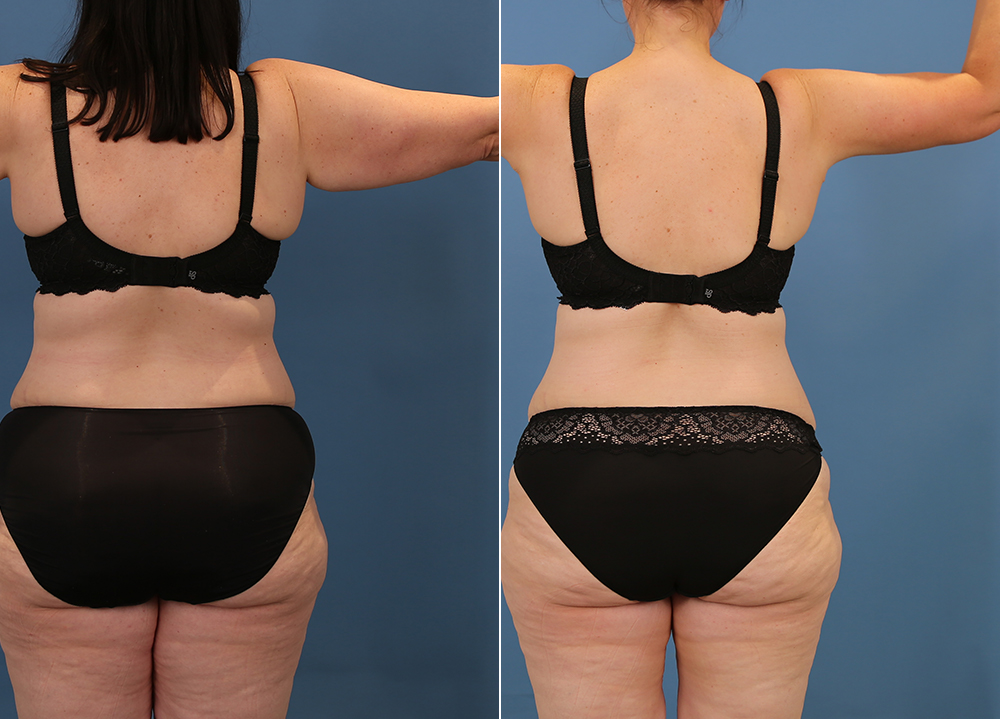
What outcomes can brachioplasty achieve?
The aim of brachioplasty is to remove excess skin from the upper arms, which may create a smoother contour in this area. People who have lost a significant amount of weight sometimes find that the skin of the upper arm does not contract fully on its own. In these cases, surgery may be considered as one option to address the remaining excess skin.
As with all procedures, outcomes vary between individuals, and it is important to discuss expectations and possible results in detail with a qualified surgeon.
WHAT ARE THE MAIN reasons for a brachioplasty?
TO REMOVE EXCESS FAT AND SKIN
The upper arms are an area where excess skin may remain after significant weight loss. This is because skin that has been stretched by fat may not fully contract once the fat is lost.
People who have undergone bariatric surgery or lost a large amount of weight sometimes report loose skin in the arms as a concern. In these situations, brachioplasty may be considered as one option to address the excess skin, depending on individual circumstances and overall health.
SHAPING
Brachioplasty (arm lift surgery) is a procedure that removes excess skin, and in some cases fat, from the upper arms. The procedure can change the contour of the arm, but the extent of change varies between individuals.
Factors such as skin elasticity, the amount of excess tissue, and individual anatomy all influence the outcome. Some people consider this procedure if they feel that the shape of their upper arms has not changed despite weight loss, ageing, or other factors.
SYMMETRY
Some people notice a difference in proportion between the upper arm and the forearm, particularly if there is excess skin in the upper arm.
In a brachioplasty, excess skin is removed and the remaining tissue is redraped and sutured. This can change the contour of the upper arm in relation to the shoulder and forearm. The extent of change varies between individuals, and outcomes should be discussed with the surgeon as part of the consultation process.
TO REMOVE SCAR TISSUE
In some cases, people may have scars or skin changes on the upper arm from previous injuries or conditions. A brachioplasty involves removing and redraping excess skin, which may also change the appearance of pre-existing marks in the area. However, the procedure also creates new scars, and the overall appearance of the arm will vary between individuals.
TO ADDRESS HYGIENE ISSUES
Excess skin on the upper arms can sometimes cause difficulties with skin hygiene, including rashes, irritation, or infections in areas where moisture becomes trapped.
By removing some of the excess skin, brachioplasty may reduce these problems in certain cases. However, outcomes vary between individuals, and it is important to discuss potential benefits and limitations with your surgeon.
TO IMPROVE YOUR OVERALL PHYSICAL COMFORT
Excess skin on the upper arms can sometimes cause physical discomfort, such as pinching under clothing or difficulty finding a comfortable position when sleeping.
Brachioplasty involves removing and redraping excess skin, which may reduce these concerns for some people. However, experiences vary between individuals, and it is important to discuss likely outcomes and limitations with your surgeon.
FREQUENTLY ASKED QUESTIONS ABOUT BRACHIOPLASTY surgery
If pre- and post-operative images are shown on this site, they are provided for general information only and do not predict your outcome. Images are displayed using comparable lighting, positioning, background, and clothing where possible. Any gallery contains a prominent notice stating that results vary due to factors including individual anatomy and healing. Images are not digitally altered other than standard anonymisation and sizing for web display.
Dr Alex Phoon Specialist Plastic Surgeon
AHPRA registration number: MED0001587102
Registration type: Specialist registration
Recognised specialty: Plastic & Reconstructive Surgery
Patients may verify registration via the AHPRA public register.
All surgical procedures carry risks. Specific to mastopexy, these may include but are not limited to:
Anaesthetic risks, infection, bleeding, delayed healing, seroma, and scarring (including hypertrophic or keloid scars).
Changes in sensation of the nipple or skin-temporary or permanent.
Asymmetry, contour irregularities, or wound dehiscence.
Scarring that may not fade completely; healing varies by individual.
Rare but serious risks such as blood clots (DVT/PE) or death.
A comprehensive written risk summary will be provided during consultation.
It is essential that all risks & complications of surgery are understood before proceeding. For more information on risks & complications please visit our web page on Risks & Complications of Cosmetic Surgery – Dr Alex Phoon
Yes. A brachioplasty, or arm lift, involves removing excess skin and sometimes underlying tissue from the upper arms to improve contour, whereas upper arm liposuction primarily removes excess fat through small incisions without removing significant skin.
The most suitable procedure depends on your anatomy, the amount of excess skin or fat, and your desired outcome. Your surgeon will discuss the options, potential risks, and expected results during your consultation.
Brachioplasty (arm lift) involves surgical incisions to remove excess skin and improve the contour of the upper arms. Incisions are usually placed along the inner arm or the back of the arm, depending on the technique used. This results in permanent scars, the location and length of which vary according to the amount of skin removed and the surgical approach.
As with any surgery, brachioplasty carries potential risks and complications. These may include swelling, bruising, infection, changes in sensation, delayed wound healing, or scar-related issues. The likelihood and severity of complications vary between individuals. Your surgeon will discuss the risks, incision placement, and scar management options during your consultation.
Recovery after a brachioplasty varies between individuals. Most patients experience swelling, bruising, and discomfort in the first days to weeks after surgery. Light daily activities can usually be resumed within a short period, but lifting, strenuous activity, and exercise typically need to be delayed until your surgeon advises it is safe.
Post-operative care includes wearing compression garments to support the arms, following wound care instructions, and attending follow-up appointments to monitor healing. Your surgeon will provide personalised guidance on activity restrictions, scar management, and signs to watch for during recovery.
Risks and complications of cosmetic surgery
Cosmetic surgery is a form of surgery and, like all surgical procedures, carries risks and potential complications. It is important that anyone considering cosmetic surgery is provided with accurate and complete information about these risks before deciding whether to proceed.
Dr Alex Phoon is an Australian specialist plastic surgeon (specialist registration in Surgery – Plastic Surgery, AHPRA registration number: MED0001587102). He performs cosmetic and reconstructive procedures in accredited hospital facilities with appropriately qualified surgical, anaesthetic, and nursing teams.
This page outlines general categories of risks and complications that may be associated with cosmetic surgery. A full discussion of risks specific to an individual procedure will be provided in writing and during consultation as part of the informed consent process.
Scarring
Scarring is a common concern for people considering cosmetic surgery. All surgery results in some form of scarring, and while techniques are used to help reduce its appearance, it cannot be completely avoided. The extent and visibility of scars vary between individuals and depend on factors such as the type of surgery, healing response, and skin characteristics.
Read moreThe severity and appearance of scars can vary from person to person and depend on the type of procedure performed. Factors such as genetics, skin type, and individual healing responses can influence how noticeable scars may be. In many cases, scars may become less prominent over time, but this process is highly individual.
Scarring is a normal part of the body’s healing process. When the skin is cut or injured, the body forms new collagen fibres to repair the area. This healing response creates a scar, which may differ in colour and texture from the surrounding skin.
Different types of scars may occur after cosmetic surgery. For example, hypertrophic scars are raised, thickened areas that may be red or itchy. Keloid scars, which grow beyond the boundaries of the original wound, can occur in some people and may be more common in those with darker skin tones.
While surgical techniques aim to minimise tension on the skin and place incisions in less visible areas, scarring cannot be completely avoided. Patients are often advised to follow post-operative instructions carefully, which may include wound care, the use of silicone gels or dressings, and sun protection.
In some situations, scar management or revision procedures may be discussed. These may include treatments such as laser therapy, dermabrasion, or surgical excision. The choice of treatment depends on the type of scar and individual circumstances, and outcomes can vary.
It is important to have realistic expectations about scarring before undergoing surgery. Scars cannot be eliminated, but there are options to help improve their appearance. Patients are encouraged to raise any questions or concerns with their surgeon, so they can make an informed decision about the procedure and understand the potential risks and management strategies.
Infection
Infection is a potential risk of any surgical procedure, including cosmetic surgery. Although strict sterilisation and infection-control protocols are followed, it is not possible to remove this risk entirely. The likelihood and severity of infection can vary depending on individual factors and the type of procedure performed.
Read moreTo help reduce the risk of infection, surgeons may use antibiotics, follow strict aseptic techniques, and monitor patients for any signs of infection. Patients also play an important role in their recovery by carefully following post-operative care instructions, which can assist in lowering the risk of complications.
Infection is a recognised risk of all surgical procedures, including cosmetic surgery. Any time the skin is cut, there is an entry point for bacteria and other microorganisms. Although healthcare professionals follow strict sterilisation protocols to reduce this risk, it cannot be completely eliminated.
To help lower the likelihood of infection, surgeons may use antibiotics, follow strict aseptic techniques during surgery, and monitor patients carefully afterwards. Antibiotics may be prescribed before and/or after the operation, depending on the procedure and the patient’s individual medical circumstances.
During surgery, precautions such as using sterile instruments, maintaining a controlled environment, and wearing protective clothing are followed to help reduce the introduction of bacteria into the surgical site. Even with these measures, infections can still occur, which is why ongoing monitoring and early management are important.
Patients also play an important role in their recovery. Following post-operative instructions-such as keeping the surgical site clean and dry, avoiding activities that could interfere with healing, and promptly reporting any signs of infection (for example redness, swelling, pain, or discharge)-can assist in reducing the chance of complications.
While the risk of infection cannot be removed entirely, these combined strategies-both by the surgical team and the patient-are designed to support safer recovery and allow for timely management if infection develops.
Pain
Pain and discomfort are common after cosmetic surgery. These symptoms can vary between individuals and procedures, but strategies such as prescribed pain relief and supportive care are often used to help manage them.
Read moreThe level of pain experienced after cosmetic surgery can vary depending on the type of procedure, an individual’s pain threshold, and their healing response. Pain relief medications are often prescribed to help manage discomfort during recovery. Patients are encouraged to communicate openly with their healthcare team about their pain, as effective management is an important part of the recovery process.
Undesirable cosmetic outcome
Although cosmetic surgery is performed with the intention of improving appearance, there is a risk that the final result may not meet a patient’s expectations or may differ from the anticipated outcome.
Read moreOutcomes can be influenced by many factors, including individual healing responses and the expectations a patient brings to surgery. It is important for patients to have open and thorough discussions with their surgeon about what results are realistically achievable and any potential limitations. In some cases, further procedures may be considered if the initial outcome does not meet expectations.
Nerve damage
Nerve injury is a possible complication of cosmetic surgery.
Read moreSurgeons take care to minimise the risk of nerve injury during procedures, but this risk cannot be removed entirely. Nerve damage may result in altered sensation such as numbness, tingling, or reduced sensitivity in the area of surgery. In some cases, these changes improve over time, although recovery can vary and some effects may be long-lasting. Patients are encouraged to discuss this risk with their surgeon before making a decision about surgery.
Bruising and swelling
Bruising and swelling are expected effects after cosmetic surgery, especially during the initial stages of recovery.
Read moreBruising and swelling are part of the body’s normal healing response after surgery. Measures such as compression garments, elevation, and cold compresses may be recommended to help manage these effects. Although usually temporary, bruising and swelling can cause discomfort and may influence the recovery process. Following post-operative care instructions can assist in supporting recovery, but the duration and severity of these symptoms vary between individuals.
Bleeding
Bleeding during or after surgery is a possible complication of any surgical procedure, including cosmetic surgery.
Read moreSurgeons use techniques during surgery to help control bleeding, but some post-operative bleeding can still occur. Patients should contact their healthcare provider if bleeding seems excessive or does not improve with gentle pressure. In rare cases, more significant bleeding may require further treatment in hospital, which can include additional procedures or, occasionally, a blood transfusion.
Seroma
A seroma is a collection of fluid that may develop under the skin following surgery.
Read moreSeromas form as part of the body’s inflammatory response and are more common after larger surgical procedures. They may cause swelling or discomfort. To manage this, surgeons may use drains during surgery or remove fluid afterwards through a procedure called aspiration. While these measures can help reduce the likelihood of fluid build-up, seromas can still occur. Regular follow-up and monitoring allow for timely detection and management if they develop.
Anaesthetic complications
Complications related to anaesthesia are uncommon but can occur with any surgical procedure, including cosmetic surgery.
Read moreAnaesthesia is used during surgery to manage pain and keep patients comfortable. The risks associated with anaesthesia can vary depending on individual factors such as medical history, allergies, and overall health. Anaesthetists are specialist doctors who monitor patients throughout the procedure and use established techniques to help reduce these risks, although complications can still occur.
Death
Although rare, death is a possible risk with any surgical procedure, including cosmetic surgery. It is important for patients to be aware that all surgery carries inherent risks.
Read morePatient safety is a key focus in cosmetic surgery. Preoperative assessment, careful surgical planning, and adherence to established protocols are important in helping to reduce risks. Patients are encouraged to discuss their individual concerns and circumstances with their surgical team.
In conclusion, while cosmetic surgery may change a person’s appearance, it also carries risks and potential complications. Understanding these risks and discussing them openly with a surgeon supports informed decision-making and realistic expectations. Following post-operative care instructions and maintaining clear communication with the healthcare team can also play an important role in recovery.


